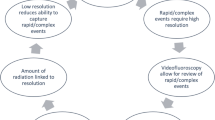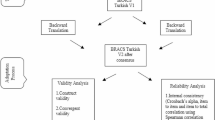Abstract
Snoring is a sign of increased upper airway resistance and is the most common symptom suggestive of obstructive sleep apnea. Acoustic analysis of snoring sounds is a non-invasive diagnostic technique and may provide a screening test that can determine the location of obstruction sites. We recorded snoring sounds according to obstruction level, measured by DISE, using a smartphone and focused on the analysis of formant frequencies. The study group comprised 32 male patients (mean age 42.9 years). The spectrogram pattern, intensity (dB), fundamental frequencies (F 0), and formant frequencies (F 1, F 2, and F 3) of the snoring sounds were analyzed for each subject. On spectrographic analysis, retropalatal level obstruction tended to produce sharp and regular peaks, while retrolingual level obstruction tended to show peaks with a gradual onset and decay. On formant frequency analysis, F 1 (retropalatal level vs. retrolingual level: 488.1 ± 125.8 vs. 634.7 ± 196.6 Hz) and F 2 (retropalatal level vs. retrolingual level: 1267.3 ± 306.6 vs. 1723.7 ± 550.0 Hz) of retrolingual level obstructions showed significantly higher values than retropalatal level obstruction (p < 0.05). This suggests that the upper airway is more severely obstructed with retrolingual level obstruction and that there is a greater change in tongue position. Acoustic analysis of snoring is a non-invasive diagnostic technique that can be easily applied at a relatively low cost. The analysis of formant frequencies will be a useful screening test for the prediction of occlusion sites. Moreover, smartphone can be effective for recording snoring sounds.

Similar content being viewed by others
References
Pevernagie D, Aarts RM, De Meyer M (2010) The acoustics of snoring. Sleep Med Rev 14:131–144
Young T, Palta M, Dempsey J, Skatrud J, Weber S, Badr S (1993) The occurrence of sleep-disordered breathing among middle-aged adults. N Engl J Med 328:1230–1235
Dille JR (1987) Snoring can be fatal for your marriage and for you. Aviat Space Environ Med 58:1234
Ben Israel N, Tarasiuk A, Zigel Y (2012) Obstructive apnea hypopnea index estimation by analysis of nocturnal snoring signals in adults. Sleep 35:1299–1305
Perez-Padilla JR, Slawinski E, Whitelaw WA et al (1993) Characteristics of the snoring noise in patients with and without occlusive sleep apnea. Am Rev Respir Dis 147:635–644
Van Brunt DL, Lichstein KL, Noe SL, Aguillard RN, Lester KW (1997) Intensity pattern of snoring sounds as a predictor for sleep disordered breathing. Sleep 20:1151–1156
Abeyratne UR, Wakwella AS, Hukins C (2005) Pitch jump probability measures for the analysis of snoring sounds in apnea. Physiol Meas 26:779–798
Shin H, Cho J (2014) Unconstrained snoring detection using a smartphone during ordinary sleep. Biomed Eng Online 15(13):116. doi:10.1186/1475-925X-13-116
Hernández-Gancedo C, Pestaña D, Peña N, Royo C, Pérez-Chrzanowska H, Criado A (2006) Monitoring sedation in critically ill patients: bispectral index, Ramsay and observer scales. Eur J Anaesthesiol 23:649–653
Koo SK, Choi JW, Myung NS, Lee HJ, Kim YJ, Kim YJ (2013) Analysis of obstruction site in obstructive sleep apnea syndrome patients by drug induced sleep endoscopy. Am J Otolaryngol 34:626–630
Shin H, Choi W, Kim YG, Cho J (2014) Preliminary study for the personal handheld device based snoring detection in ordinary sleep situation. Conf Proc IEEE Eng Med Biol Soc 2014:3687–3690
Shin H, Choi B, Kim D, Cho J (2014) Robust sleep quality quantification method for a personal handheld device. Telemed J E Health 20:522–530
Agrawal S, Stone P, McGuinness K, Morris J, Camilleri AE (2002) Sound frequency analysis and the site of snoring in natural and induced sleep. Clin Otolaryngol Allied Sci 27:162–166
Ulfberg J, Carter N, Talback M, Edling C (2000) Adverse health effects among women living with heavy snorers. Health Care Women Int 21:81–90
Wilson K, Stoohs RA, Mulrooney TF, Johnson LJ, Guilleminault C, Huang Z (1999) The snoring spectrum: acoustic assessment of snoring sound intensity in 1,139 individuals undergoing polysomnography. Chest 115:762–770
Beck R, Odeh M, Oliven A, Gavriely N (1995) The acoustic properties of snores. Eur Respir J 8:2120–2128
Quinn SJ, Daly N, Ellis PD (1995) Observation of the mechanism of snoring using sleep nasendoscopy. Clin Otolaryngol 20:360–364
Ng AK, Koh TS, Baey E, Lee TH, Abeyratne UR, Puvanenfran K (2007) Could formant frequencies of snore signals be an alternative means for the diagnosis of obstructive sleep apnea? Sleep Med 9:894–898 Epub 2007 Sep 6
Sundberg J (2001) Level and center frequency of the singer’s formant. J Voice 15:176–186
Hoffstein V (2002) Apnea and snoring: state of the art and future directions. Acta Otorhinolaryngol Belg 56:205–236
Author information
Authors and Affiliations
Corresponding author
Ethics declarations
This research protocol was reviewed and approved after deliberation by the Busan Saint Mary’s Hospital Institutional Review Board (IRB).
Conflict of interest
The authors have no funding, financial relationships, or conflicts of interest to disclose.
Informed consent
Informed consent was obtained from all individual participants included in the study.
Rights and permissions
About this article
Cite this article
Koo, S.K., Kwon, S.B., Kim, Y.J. et al. Acoustic analysis of snoring sounds recorded with a smartphone according to obstruction site in OSAS patients. Eur Arch Otorhinolaryngol 274, 1735–1740 (2017). https://doi.org/10.1007/s00405-016-4335-4
Received:
Accepted:
Published:
Issue Date:
DOI: https://doi.org/10.1007/s00405-016-4335-4




